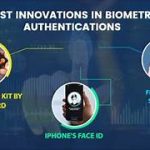Challenges of Data Privacy in the Age of Smart Devices
The proliferation of smart devices has transformed our lives in countless ways, making daily tasks easier, communication faster, and access to information more seamless. From smart speakers and fitness trackers to connected appliances and autonomous vehicles, the Internet of Things (IoT) has revolutionized how we interact with technology. However, this interconnected world comes with significant trade-offs, particularly in the realm of data privacy.
As these devices become deeply embedded in our personal and professional lives, they collect, process, and transmit vast amounts of data, often without users being fully aware of the implications. This article explores the challenges of data privacy in the age of smart devices, examining the key risks, vulnerabilities, and potential solutions to safeguard personal information.
The Rise of Smart Devices and Data Collection
Smart devices are designed to enhance convenience and functionality by using sensors, artificial intelligence, and internet connectivity. They collect a wide range of data, such as location, health metrics, voice recordings, browsing habits, and even behavioral patterns. For example:
- Smart Home Devices: Products like Amazon Echo, Google Nest, and smart thermostats monitor voice commands, room occupancy, and energy usage.
- Wearables: Fitness trackers and smartwatches gather sensitive health information, including heart rate, sleep patterns, and exercise habits.
- Connected Cars: Autonomous and connected vehicles track location, driving behavior, and even in-car conversations.
- Smartphones: Arguably the most ubiquitous smart device, smartphones store a treasure trove of personal data, from photos and contacts to financial and biometric information.
While these devices bring immense benefits, the continuous data collection they rely on poses a significant threat to individual privacy.
Key Challenges of Data Privacy
1. Lack of User Awareness and Control
One of the most pressing challenges is that users often have little understanding or control over the data their devices collect. Privacy policies are frequently dense, opaque, and filled with legal jargon, making it difficult for users to grasp how their data is used, stored, or shared.
For instance, many IoT devices come with default settings that prioritize data collection and sharing. Users may unknowingly grant permissions for their data to be shared with third parties, including advertisers and data brokers, without a clear understanding of the consequences.
2. Data Security Vulnerabilities
Smart devices are inherently vulnerable to cyberattacks due to their reliance on network connectivity and often limited security measures. Hackers can exploit these weaknesses to access sensitive data, compromise devices, or launch broader attacks, such as distributed denial-of-service (DDoS) campaigns.
Examples of data security challenges include:
- Weak Authentication: Many devices lack robust password protections or rely on default credentials that are easily guessed.
- Unencrypted Data Transmission: Some devices transmit data without encryption, making it vulnerable to interception.
- Infrequent Updates: Many IoT devices receive infrequent or no security updates, leaving known vulnerabilities unpatched.
3. Data Proliferation and Third-Party Sharing
The data collected by smart devices is often shared with third parties, including manufacturers, cloud service providers, and advertisers. This data proliferation increases the risk of misuse, as it becomes challenging to track who has access to the information and how it is being used.
For example, data brokers aggregate information from multiple sources to create detailed profiles of individuals, which are then sold to marketers, employers, or even governments. This practice raises ethical concerns about consent and accountability.
4. Inadequate Regulatory Frameworks
While data privacy regulations like the General Data Protection Regulation (GDPR) in the EU and the California Consumer Privacy Act (CCPA) in the U.S. have set important benchmarks, the global regulatory landscape remains fragmented. Many regions lack comprehensive laws to address the unique challenges posed by IoT devices, leading to inconsistent protections for consumers.
Additionally, enforcement of existing regulations can be challenging due to jurisdictional issues, as data often crosses borders during processing and storage.
5. Privacy Risks from Aggregated Data
Even when individual data points seem harmless, the aggregation of data from multiple devices can create highly detailed and intrusive profiles of users. For instance, combining location data from a smartphone with health data from a fitness tracker can reveal sensitive insights about an individual’s lifestyle, habits, and even medical conditions.
This level of granularity raises concerns about how such data could be used for profiling, discrimination, or surveillance.
6. Device Interoperability and Ecosystem Risks
The interconnected nature of smart devices means that vulnerabilities in one device can compromise the entire ecosystem. For example, a compromised smart thermostat could provide attackers with a pathway to access other devices on the same network, such as security cameras or personal computers.
Interoperability issues also complicate data privacy, as devices from different manufacturers may have varying standards for security and data handling, creating inconsistencies in protection.
Implications for Individuals and Society
The challenges of data privacy in the age of smart devices extend beyond individual users to impact society as a whole. Key implications include:
- Erosion of Trust: Privacy breaches and misuse of data can erode trust in technology companies and smart devices, potentially hindering adoption and innovation.
- Surveillance and Control: The extensive data collection capabilities of smart devices raise concerns about mass surveillance, particularly when governments or corporations use the data to monitor individuals or manipulate behavior.
- Inequality and Discrimination: Data-driven profiling can exacerbate social inequalities if used for discriminatory practices, such as denying access to services based on inferred characteristics.
Strategies for Addressing Data Privacy Challenges
To mitigate the risks associated with smart devices, a multi-faceted approach involving users, manufacturers, regulators, and policymakers is essential.
1. Empowering Users with Transparency and Control
Manufacturers should prioritize transparency by providing clear and accessible privacy policies, as well as intuitive interfaces for managing data permissions. Features like opt-in consent, data anonymization, and the ability to delete stored data can give users greater control over their information.
2. Enhancing Device Security
Security should be a core consideration in the design and development of smart devices. Key measures include:
- Implementing strong authentication mechanisms, such as multi-factor authentication (MFA).
- Encrypting data both at rest and in transit.
- Providing regular software updates to address vulnerabilities.
3. Strengthening Regulations
Governments and regulatory bodies must establish and enforce comprehensive data privacy laws that address the unique challenges of IoT devices. These regulations should require manufacturers to adhere to data minimization principles, ensure secure data storage, and obtain explicit user consent for data collection and sharing.
4. Promoting Industry Standards
Industry-wide standards for IoT security and data privacy can help create consistent protections for users. Organizations like the Internet Society’s IoT Trust Framework provide guidelines for manufacturers to follow, ensuring that devices meet minimum security and privacy requirements.
5. Raising Awareness and Education
Educating users about data privacy risks and best practices is essential for fostering informed decision-making. Public awareness campaigns and educational resources can help users recognize potential threats and adopt behaviors that protect their privacy.
Conclusion
The age of smart devices presents both immense opportunities and significant challenges for data privacy. While these devices offer unparalleled convenience and functionality, they also expose users to risks related to data collection, security vulnerabilities, and misuse of personal information. Addressing these challenges requires a collaborative effort among manufacturers, regulators, and users to establish robust privacy protections and ensure that technology continues to enhance our lives without compromising our rights.
As we navigate this interconnected world, balancing innovation with privacy will be critical to building trust in smart devices and safeguarding the digital future.


